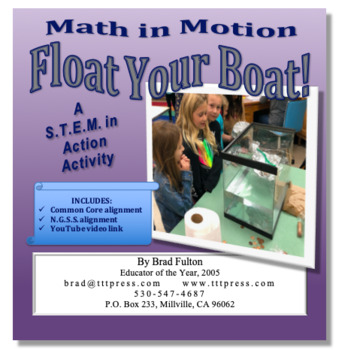Float Your Boat: A "S.T.E.M. in Action" Activity
- PDF
- Google Apps™

Description
Students love designing their aluminum foil boats and testing them to measure their buoyancy. Working in teams they research and design their boats. Then they build and test them. Next they evaluate their performance and improve on their design. In the process, they practice skip counting and using a number line as a precursor to making line plots. They can also incorporate the use of Google Slides to record their work.
As a “S.T.E.M. in Action” activity, this lesson includes all four components of a true S.T.E.M. lesson:
- Science – Students learn about buoyancy
- Technology – Students can use Google Slides to record their work
- Engineering – Students design a boat with maximum buoyancy, evaluate its performance, and improve their design
- Math – Students skip count by tens and measure with pennies and record their work as whole numbers (119¢) or decimals ($1.19).
The “Math in Motion” lessons captivate students by getting students up and active as they participate in fun, engaging, and mathematically sound lessons.
But these lessons aren’t just fun with a little math sprinkled on top. They are grade-level-appropriate lessons that will help students connect to the standards.
- Gathering data
- Skip counting by tens
- Counting money
- Using whole numbers or decimals
- Using Google Slides





